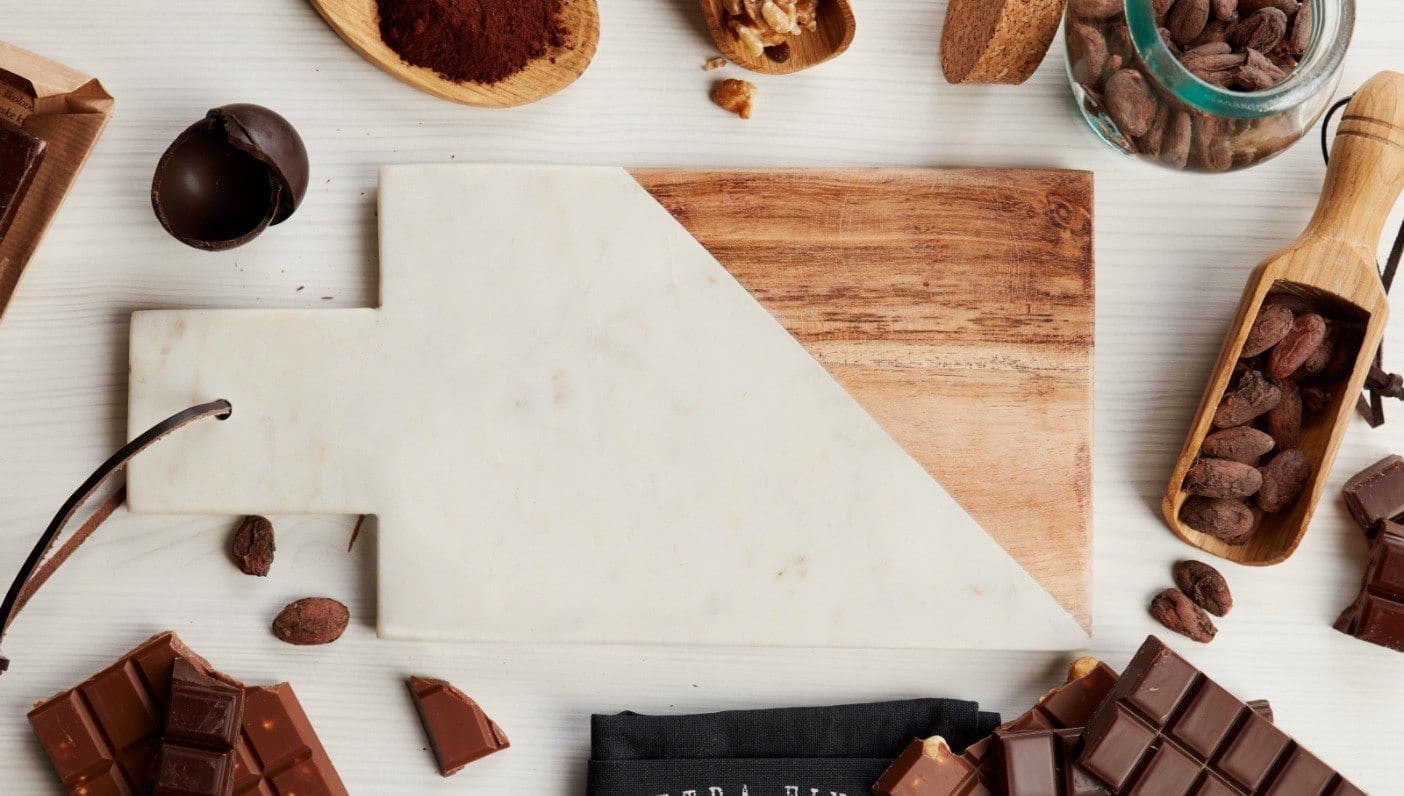
Name: Dark Chocolate
Most Commonly Found: Roughly two-thirds of the entire world’s cocoa is produced in West Africa. The Ivory Coast of Africa accounts for 43 percent of the cocoa, where child labor is common. According to the World Cocoa Foundation, about 50 million chocolatiers purchase their chocolate from them, though many initiatives are underway to source fair trade chocolate and end deforestation.
Sweet Facts: In general, chocolate is the typically sweet, often brown, food preparation of Theobroma cacao seeds, in which it is roasted, ground, and often flavored. It is made in the form of a liquid, paste or block and used as a flavoring ingredient in countless sweet foods. Chocolate been circulated since ancient times. The European Union regulations require dark chocolate to have at least 60 percent cocoa solids, and milk chocolate 25 percent, while white chocolate has none.
What to Heal: Dark chocolate has countless, sweet benefits. It’s very nutritious, especially when having a high cocoa content. It’s loaded with soluble fiber and minerals.
A 100 gram bar of dark chocolate with 70 to 85 percent cocoa contains:
- 11 grams of fiber
- 67 percent of the RDA for Iron
- 58 percent of the RDA for Magnesium
- 89 percent of the RDA for Copper
- 98 percent of the RDA for Manganese
- Plenty of potassium, phosphorus, zinc and selenium
However, 100 grams of dark chocolate is a fairly large amount and should not be consumed daily.
It contains mostly saturated and monounsaturated fats, with small amounts of polyunsaturated, as well as small amounts of stimulates like caffeine and theobromine.
Dark chocolate is also a powerful source of antioxidants, one of the largest sources of antioxidants, in general. It is loaded with organic compounds that are biologically active and function as antioxidants, including polyphenols, flavanols, catechins, amount others.
One study showed that dark chocolate actually contained more antioxidant activity, polyphenols and flavanols than any fruit tested, including blueberries and Acai berries.
Dark chocolate may also improve blood flow and lower blood pressure, since it stimulates the endothelium, the lining of the arteries, to produce Nitric Oxide, which sends signals to the arteries to relax, which lowers resistance to blood flow, lowering blood pressure.
Dark chocolate improves several important risk factors for disease, lowering the susceptibility of LDL to oxidative damage while increasing HDL and improving insulin sensitivity. In addition, observational studies show a drastic reduction in heart disease for those who consume dark chocolate.
One of the sweetest benefits of dark chocolate is that it can actually improve brain activity. It has also been proven to prevent stress.
Dark chocolate is often also considered to be an aphrodisiac, but some believe that that’s just because eating it makes people happy, increasing serotonin, in general.
History and Lore: Dark chocolate’s history dates back at least 3,000 years, beginning as a bitter drink in the pre-historic tropics of South Africa. The dark chocolate was the original form of chocolate consumed.
Approximately 1,400 to 1,100 BCE, the Maya and Aztecs used to drink dark chocolate for ceremonial and medicinal purposes, and it was also a luxury for the elite. The drink was bitter and was often cut with vanilla, chili pepper, cornmeal, alcohol or other spices.
The Aztecs believed that cacao seeds were the gift of Quetzalcoatl, the God of wisdom, and the seeds were so valuable, they were used as currency. It was believed to have aphrodisiac powers and to give the drinker strength.
When Columbus arrived, he was unimpressed by the drink, but Hernando Cortez introduced the beverage to the Spanish, who added cane sugar or honey to the formula. At first it was only for consumed by royalty.
In 1689, milk was added to the mix by Hans Sloan in Jamaica, and in 1828, the Dutch chocolate-maker Conrad van Houten invented a hydraulic press to make cocoa power and an alkalizing process to mellow the taste.
In 1847, Fry and Sons of England created the first solid eating chocolate and it quickly spread throughout Europe, making its way to Switzerland in 1864. As for America, Milton Hershey began operations in 1894.
What are your favorite ways to eat chocolate?
—
 Sara is a writer, digital marketing strategist, a content and social media professional based out of Boulder, Colo. After working in the yoga industry for several years, she has an expertise in writing and marketing for the industry. When she’s not working, she’s practicing yoga, going to a barre class, hiking the Flatirons, or playing with her pup, Zion. Feel free to contact her at sarafruman@gmail.com
Sara is a writer, digital marketing strategist, a content and social media professional based out of Boulder, Colo. After working in the yoga industry for several years, she has an expertise in writing and marketing for the industry. When she’s not working, she’s practicing yoga, going to a barre class, hiking the Flatirons, or playing with her pup, Zion. Feel free to contact her at sarafruman@gmail.com